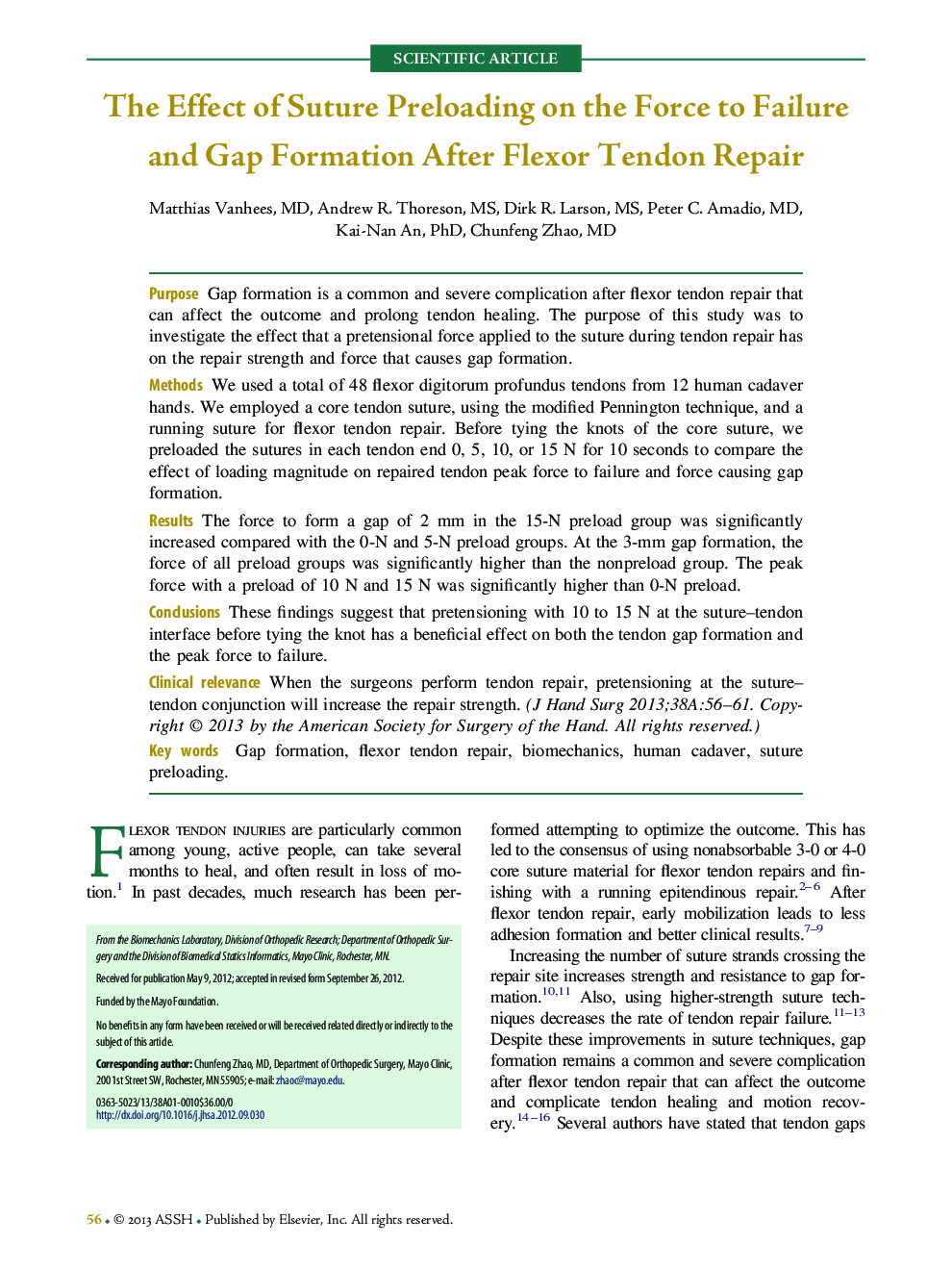| Article ID | Journal | Published Year | Pages | File Type |
|---|---|---|---|---|
| 4069672 | The Journal of Hand Surgery | 2013 | 6 Pages |
PurposeGap formation is a common and severe complication after flexor tendon repair that can affect the outcome and prolong tendon healing. The purpose of this study was to investigate the effect that a pretensional force applied to the suture during tendon repair has on the repair strength and force that causes gap formation.MethodsWe used a total of 48 flexor digitorum profundus tendons from 12 human cadaver hands. We employed a core tendon suture, using the modified Pennington technique, and a running suture for flexor tendon repair. Before tying the knots of the core suture, we preloaded the sutures in each tendon end 0, 5, 10, or 15 N for 10 seconds to compare the effect of loading magnitude on repaired tendon peak force to failure and force causing gap formation.ResultsThe force to form a gap of 2 mm in the 15-N preload group was significantly increased compared with the 0-N and 5-N preload groups. At the 3-mm gap formation, the force of all preload groups was significantly higher than the nonpreload group. The peak force with a preload of 10 N and 15 N was significantly higher than 0-N preload.ConclusionsThese findings suggest that pretensioning with 10 to 15 N at the suture–tendon interface before tying the knot has a beneficial effect on both the tendon gap formation and the peak force to failure.Clinical relevanceWhen the surgeons perform tendon repair, pretensioning at the suture–tendon conjunction will increase the repair strength.
